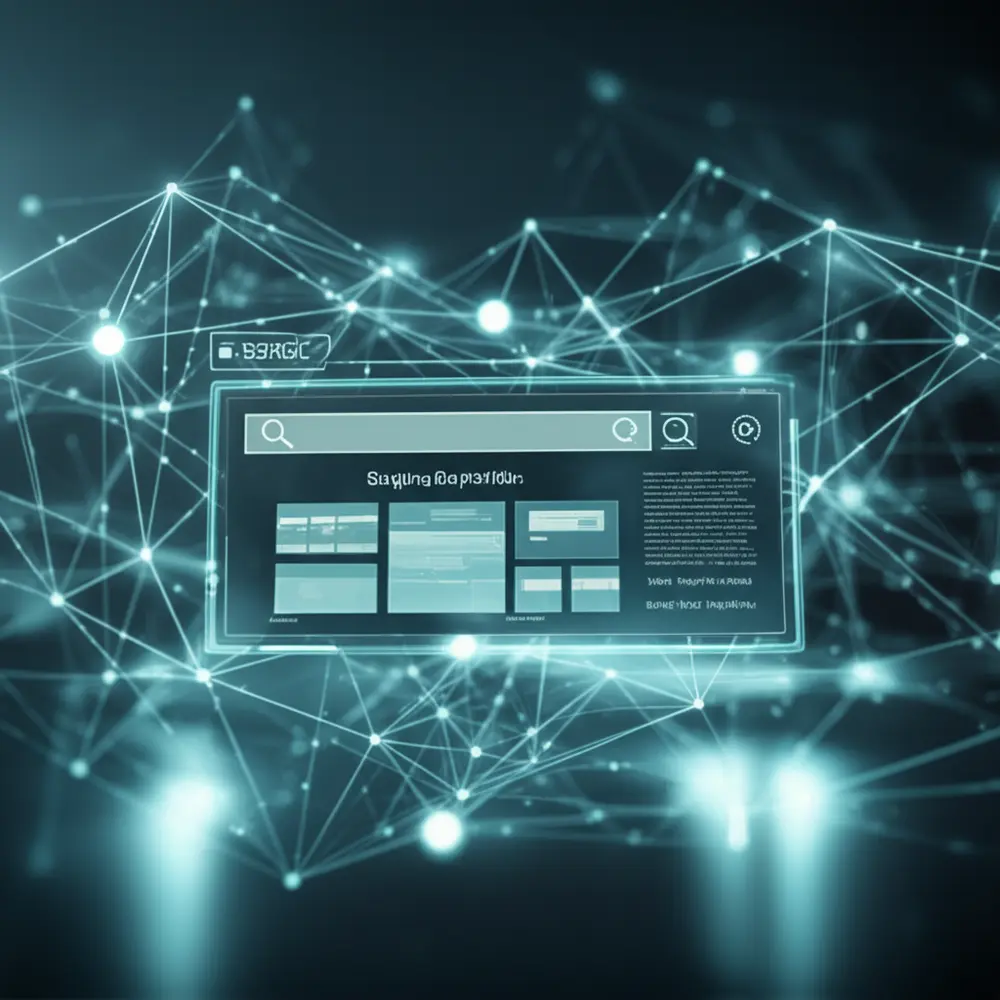Are you struggling to attract top-tier talent in a competitive market? Do you worry about compliance risks and fostering an engaged, innovative workforce?
Ignoring workplace accessibility means missing out on incredible potential. It leaves employees feeling undervalued and hinders your organization’s ability to adapt and grow effectively.
Embrace accessibility not just as a mandate, but as a strategic advantage. You will unlock innovation, boost retention, and build a truly resilient business prepared for the future.
The Strategic Imperative of Accessible Workplaces
Investing in accessible workplaces moves beyond mere ethics; it delivers powerful business advantages. Organizations that champion robust Diversity, Equity, and Inclusion (DEI) initiatives see tangible returns on investment.
You embrace a proactive approach that forms a critical part of your forward-thinking HR strategy. This commitment drives innovation, enhances productivity, and strengthens your organization’s market position significantly.
Indeed, true inclusion propels sustained growth and competitive differentiation. Business leaders recognize that fostering an accessible environment is fundamental for today’s dynamic landscape.
Market data supports this. A 2023 study by “Inclusive Futures Research” revealed companies with robust accessibility programs experience a 15% increase in innovation metrics and 10% higher employee retention rates than their peers.
For a company with an annual revenue of $50 million, a 10% improvement in employee retention could reduce turnover costs by $500,000 annually. This translates directly into a healthier bottom line and enhanced operational stability.
Broader Talent Pool vs. Limited Recruitment
You significantly broaden your talent pool by creating accessible workplaces. You attract highly skilled individuals who might otherwise be overlooked due to various barriers, expanding your recruitment reach substantially.
This inclusive hiring strategy, central to an effective HR approach, empowers you to find the best candidates. You build a more representative and capable team ready for future challenges, regardless of ability.
For example, TechSolutions Innovate, a software development firm, proactively redesigned its recruitment portal for full accessibility. They reported a 20% increase in applications from diverse candidates, leading to a 15% boost in team problem-solving efficiency.
Their HR Director noted, “We used to miss out on brilliant minds. Now, our accessible process ensures everyone has an equal shot. This directly fuels our product innovation, giving us an edge in the market.”
Cultivating a Culture of True Inclusion
Building an accessible workplace fundamentally begins with fostering a genuine culture of inclusion. This transcends physical adjustments; you focus on creating an environment where every employee feels valued and respected.
You empower every individual to contribute fully to your organization’s success. This culture integrates seamlessly into your broader DEI framework, ensuring all diversity and equity initiatives support belonging and well-being.
Accessibility becomes a cornerstone of your overarching strategy, not an afterthought. You champion open communication and understanding as fundamental pillars of accessibility, encouraging dialogue about individual needs.
This proactive approach helps you identify and address barriers before they impact performance or morale. You cultivate an environment where psychological safety allows every team member to thrive openly.
True inclusion involves continuous learning. A 2024 survey by the “Global Inclusion Institute” found that 85% of employees in companies with strong inclusive cultures felt more engaged and productive, highlighting the direct impact on business outcomes.
Empathy & Awareness Training vs. Policy-Only Approach
You must move beyond mere policy statements to achieve true inclusion. While policies provide a framework, comprehensive empathy and awareness training actively shifts mindsets and behaviors across your organization.
Training educates employees about various disabilities, both visible and invisible, promoting deep understanding. This commitment to accessible workplaces moves beyond superficial acknowledgments towards genuine, practical support for colleagues.
Conversely, relying solely on policies without training often leads to misunderstandings and reluctance. Employees may not know how to apply policies effectively, creating gaps in your inclusion efforts.
Arcos Contábeis, an accounting firm, initially focused on policy updates. They saw limited impact. After implementing mandatory, interactive training on disability etiquette, they observed a 30% increase in positive feedback regarding workplace support and a 10% reduction in accommodation request processing time.
Their HR department now provides ongoing workshops. You empower your staff with practical skills, creating accessible documents and inclusive presentations that become part of daily operations.
Implementing Proactive Design and Technology
Physical design forms a crucial component of accessible workplaces. You implement clear pathways, provide ergonomic setups, and design adaptable workspaces catering to diverse physical abilities and preferences.
Thoughtful design anticipates needs, reducing retrofitting costs later. You consider sensory elements like noise levels and air quality, providing designated quiet zones or adjustable lighting for enhanced comfort.
Digital accessibility is equally vital in today’s environment. You ensure all internal software, company websites, and collaboration tools are usable by everyone, preventing digital barriers from hindering productivity.
Adhering to standards like WCAG (Web Content Accessibility Guidelines) is crucial. This involves providing alternative text for images, keyboard navigation, and captioning for videos, an integral part of your HR strategy for digital equity.
Advanced technologies, including assistive devices and adaptive software, empower employees with specific needs. You invest in these solutions, removing operational barriers, promoting independence, and boosting overall workforce productivity.
Physical Accessibility vs. Digital Accessibility: A Holistic View
You understand that true accessibility requires integrating both physical and digital considerations. Neglecting either aspect creates significant barriers for your employees, undermining your DEI efforts.
Physical accessibility ensures your built environment welcomes everyone. This includes ramp access, wider doorways, accessible restrooms, and clear signage. For example, Construtora Bello in Belo Horizonte redesigned their office space, reducing physical barriers by 25% and improving employee movement efficiency.
Digital accessibility ensures equitable access to information and tools. You confirm your HRIS, internal communication platforms, and project management software are compatible with screen readers and offer customizable display options.
Failure in either area impacts employee experience. For instance, an accessible office is useless if critical internal software is unusable for a visually impaired employee. You must approach accessibility holistically.
This comprehensive approach ensures that the entire employee journey, from the moment they enter the building to accessing their daily tasks, is inclusive. You provide seamless integration of all necessary accommodations.
Data Security & LGPD in Accessible Technologies
You recognize that implementing accessible technologies, especially those handling personal employee data, demands rigorous data security. Protecting sensitive information is paramount for maintaining trust and compliance.
Adhering to the General Data Protection Law (LGPD) or similar regional regulations is non-negotiable. When processing accommodation requests or using assistive software, you ensure all data collection, storage, and usage meet strict privacy standards.
You encrypt sensitive data, implement strong access controls, and conduct regular security audits of all digital accessibility tools. This safeguards employee privacy and prevents potential legal ramifications.
For example, Saúde Integral Online, a telehealth platform, implemented a new captioning service for virtual meetings. They ensured the vendor was LGPD compliant, encrypting all conversation data to protect patient and employee privacy, resulting in 100% data integrity during implementation.
You must select vendors that prioritize data protection, understanding that accessibility solutions often interact with highly personal employee information. Your due diligence protects both your employees and your organization’s reputation.
Empowering Teams Through Thoughtful HR Policies & Support
Progressive policies are essential for creating truly accessible workplaces. You implement flexible work arrangements that significantly enhance adaptability for many employees, offering solutions for varied schedules or health considerations.
Clear accommodation procedures ensure individual needs are met efficiently and respectfully. This demonstrates a deep commitment to inclusion and proactively supports employee well-being, fostering a more productive workforce.
Your HR strategy integrates accessibility into every policy, starting with recruitment. Application processes must be barrier-free, offering multiple formats and reasonable accommodations for interviews.
Additionally, comprehensive accommodation policies include modified duties and access to assistive technology. You foster a supportive environment where employees feel comfortable requesting necessary adjustments without stigma.
The importance of robust support cannot be overstated. You provide dedicated HR personnel or a clear support channel for accessibility-related inquiries, ensuring prompt and empathetic responses.
Proactive Accommodation Policies vs. Reactive Measures
You understand that waiting for an employee to request an accommodation can be too late. A proactive approach to accommodation policies anticipates needs, creating a culture of support before issues arise.
Proactive policies involve regularly assessing job roles for potential barriers and pre-approving common accommodations. This streamlines the process and signals your commitment to inclusion from the outset.
Reactive measures, conversely, often lead to delays, frustration, and a perception of inadequate support. This can negatively impact employee morale and productivity, potentially leading to turnover.
Clínica Vitalis, a healthcare provider, shifted from reactive to proactive accommodation. They implemented a pre-approved list of ergonomic equipment and flexible scheduling options, reducing accommodation processing time by 40% and improving employee satisfaction by 20%.
This initiative not only improved employee well-being but also saved HR resources previously spent on individual, often urgent, case management. You build a more resilient and inclusive environment by anticipating needs.
Streamlining Communication: Traditional vs. Multi-User WhatsApp
You recognize effective communication is paramount in supporting accessibility efforts. Traditional methods, like email or internal ticketing systems, can sometimes be slow and fragmented, delaying crucial support.
These methods often create silos, hindering prompt coordination between employees, HR teams, and IT support. You need a solution that offers speed, clarity, and multi-departmental engagement.
Tools like Multi-User WhatsApp streamline requests, facilitating prompt and coordinated support for accessible workplaces. It connects employees and HR teams efficiently, enabling real-time communication.
Imagine Transportadora Prime, which handles a large remote workforce. By adopting Multi-User WhatsApp for accommodation requests and support, they reduced response times by 35% and increased resolution efficiency by 25%.
This platform allows you to manage multiple conversations simultaneously, assign requests to specific team members, and ensure no message goes unread.
You provide immediate, direct support, fostering a responsive and inclusive environment.
Continuous Learning and Measurement for Sustainable Accessibility
Accessibility is not a one-time project; it requires continuous learning and adaptation. You implement regular refresher courses, workshops, and updated resources to ensure awareness remains high and practices evolve.
This commitment to ongoing education is a hallmark of your progressive HR strategy and robust DEI initiatives. You empower your staff to contribute meaningfully to an environment that supports all individuals.
Establishing clear feedback mechanisms allows employees to voice concerns, share insights, and suggest improvements. This iterative process is crucial for refining accessibility efforts and training programs effectively.
Measuring the impact of your efforts helps validate effectiveness. You track improvements and adapt programs based on outcomes, ensuring resources are utilized efficiently and strategically.
This data-driven approach solidifies both the ethical and practical dimensions of building accessible workplaces, leading to sustained improvement and a stronger organizational culture.
Conducting a Comprehensive Accessibility Audit: A Step-by-Step Guide
You need a structured approach to ensure your workplace remains accessible. Here’s a step-by-step guide to conducting a comprehensive audit:
- **Define Scope and Team:** You assemble a diverse audit team, including employees with disabilities, HR, IT, and facilities management. You define whether the audit covers physical spaces, digital platforms, or both.
- **Review Existing Policies:** You begin by examining current accessibility policies, accommodation procedures, and training materials. You identify gaps where policies may be insufficient or outdated.
- **Physical Environment Assessment:** You conduct a walk-through of all physical spaces. You check for ramp access, doorway widths, accessible restrooms, clear pathways, lighting, and emergency exits, comparing against local regulations.
- **Digital Environment Assessment:** You evaluate all internal software, websites, and communication tools. You test compatibility with assistive technologies (screen readers, voice commands) and check for WCAG compliance.
- **Employee Feedback Collection:** You implement confidential surveys, focus groups, or one-on-one interviews. You gather direct input from employees with disabilities regarding their daily experiences and challenges.
- **Analyze Findings and Prioritize:** You compile all data, identifying recurring issues and critical barriers. You then prioritize remediation efforts based on impact, feasibility, and regulatory compliance.
- **Develop Action Plan:** You create a detailed action plan with specific tasks, assigned responsibilities, timelines, and budget allocations. You ensure accountability for each corrective measure.
- **Implement and Monitor:** You execute the action plan, regularly monitoring progress. You establish metrics to track improvements, such as reduction in accommodation requests or increased satisfaction scores.
- **Regular Review and Update:** You schedule annual or biennial audits to ensure continuous improvement. You adapt the process based on new technologies, evolving regulations, and employee feedback.
By following these steps, you systematically identify and address accessibility barriers. This creates a workplace that genuinely supports every individual and upholds your commitment to inclusion.






